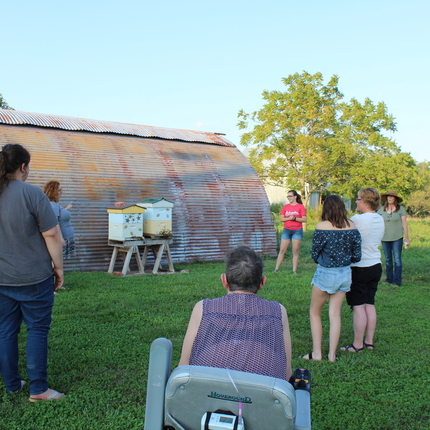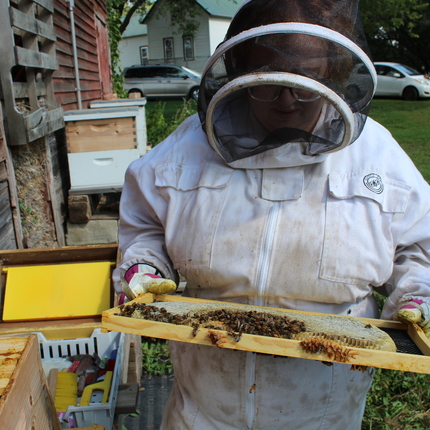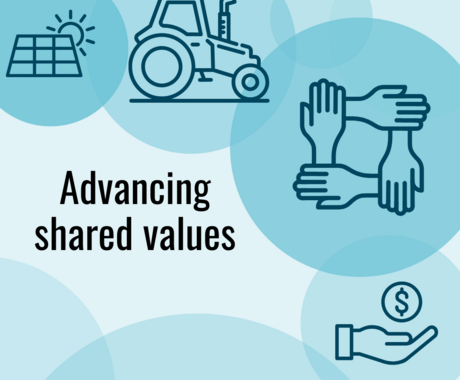This summer, huge green peppers were picked out of Joette Novak’s garden – the most she’s ever seen.
She attributes this success to the bees placed on her land.
Joette, a landowner near Brainard, Nebraska, participates in a Center for Rural Affairs and University of Nebraska at Lincoln project that connects women beekeepers and women landowners for environmental and economic benefit.
Across the nation, small-scale beekeeping and the diversified or specialty crop farming industries are growing. Many beekeepers lack land for their hives, and landowners could benefit from honey bee pollination and pollinator-friendly conservation practices.
With continued high bee colony and habitat loss, pairing the two industries presents a critical opportunity to support the pollinators we rely on while promoting business sustainability through the co-location, or stacking, of honey bees and diversified or specialty crop farms.
Project organizers paired Joette with beekeeper Kirstin Bailey, a Center for Rural Affairs project associate, who has a bee business on the side.
Kirstin has four hives near her home on one side of Brainard, and now has two hives near Joette’s home on the opposite side of the town. This model supports hive health and bolsters the environmental sustainability of women beekeepers and women farmers.
One of the benefits to landowners is better pollination of specialty crops leading to more fruits and vegetables, which Joette is the most interested in for her garden and fruit trees.
“I want bees on my land for the pollination factor,” she said. “Bees are a good thing for that.”
The landowner said the bees didn’t bother her grandkids or the cattle that graze on nearby land. And, Kirstin took care of mowing around the hives.
Kirstin said one of the reasons she wanted a second location was to maximize her radius. While Joette’s house isn’t quite 2 miles away from her own, she is still giving the bees room to roam. Bees will travel up to 5 miles to find nectar.
In a close proximity, the insects found lots of wildflowers, corn, and soybeans. They even traveled across the field to flowers at the town cemetery.
By diversifying forage, Kirstin sees improved colony health and greater honey production as well.
Maintaining a second location has its economic benefits, and it only takes a visit about once every one or two weeks.
“I’ve learned to be more intentional and more organized with my tools and time,” she said. “I try to bring everything I need. I can sometimes anticipate what I might need by what was going on the last time I visited, and what time of year it is.”
The project seems to be accomplishing its goal of helping to grow environmental awareness, and Joette is taking notice.
“What’s a world without pollinators?” she asked.
This project is made possible by funding from a Sustainable Agriculture Research and Education grant from the USDA Natural Resources Conservation Service.
Learning circles
This project uses the learning circle model to train and connect women who are small-scale beekeepers and/or diversified farmers, addressing plant-pollinator interactions and farming/apiculture practices, network building, and business connections.
In September, participants of the learning circle visited Joette Novak’s land to talk about the project and check out the hive set-up.
By working together, small-scale beekeepers and small, diversified farmers can improve their knowledge, production, and profitability while protecting environment and bee health; the project will assess these changes.






